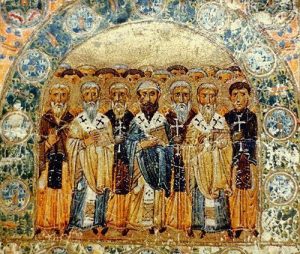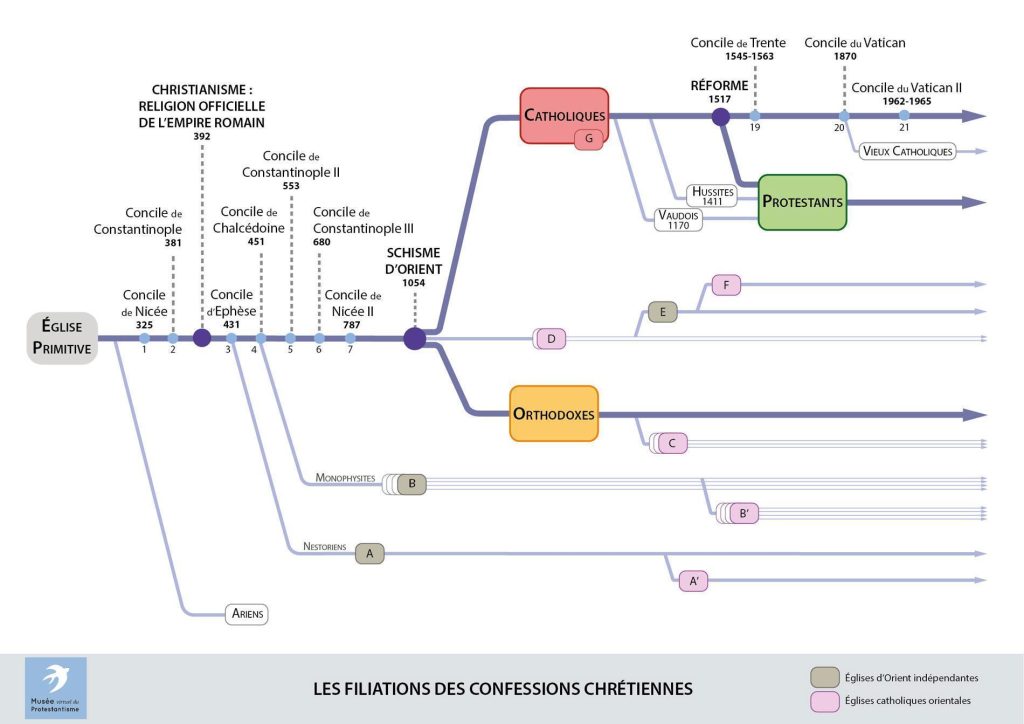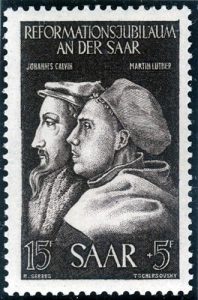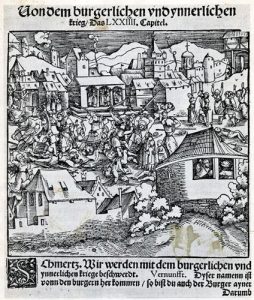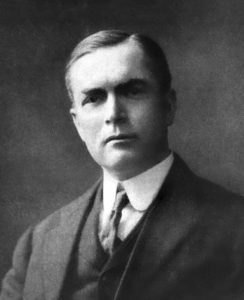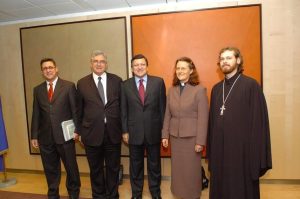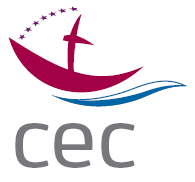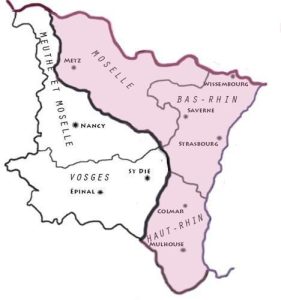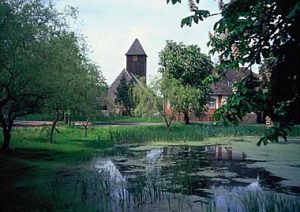Object of ecumenism
Ecumenical is of Greek origin, but ecumenism was coined in the 19th century. Ecumenism implies debates. Its purpose is twofold: firstly the concern for humanity to live together all over the inhabited earth, secondly the attempt to unify Christians, which does not exclude diversity.
The distinction should be made between ecumenism, a dialogue between Christians, and interfaith, a dialogue between religions.
History of ecumenism
Being able to live together on Earth
The concern of humanity as a whole can be found in the New Testament, especially in Matthew 25, 31-46… « And before him shall be gathered all nations… »
Early Christianity was marked by ecumenical concern about the Earth we live on together. While acknowledging diversity and the importance of contexts and experience, this concern was manifest in the statement that humanity is one. It brings the hope of a habitable Earth, friendly to everyone, true to the universal dimension on which the teachings of Christianity and its eschatological expectation is based.
The first Christian communities, who were rather diversified and supported by the Church Fathers, took up the problem. They worked and met at ecumenical councils which decided on doctrinal matters, on ecclesial organization, without fearing debates that led to lasting agreement points. Emperor Constantin joining Christianity was a decisive step. Debates thereafter kept being enriched within the Church.
Debates over seeking dogmatic unity
The issues raised by dogmas continued to be debated. They were based on the New Testament, especially on the following verses:
- John 17,21…That they all may be one…,
- Ephesians 4,3-6…One Lord, one faith, one baptism…,
- but also John 14,2…In my Father’s house are many mansions.
The aim of the first ecumenical councils was to specify the doctrine in order to keep unity. Thus Emperor Constantin (288-337) called the Council of Nicea in 325 that condemned Arianism because they denied the divinity of Christ. The following ecumenical councils went on specifying the doctrine of the Church, especially those of Ephesus in 431, and of Chalcedon in 451. These councils however condemned the ideas opposed to the dogma they had specified. There followed the Nestorian and Monophysite schisms about the human or divine nature of Christ.
Christian anti-Semitism ensued from the Jews being accused of killing God through Jesus Christ. A charge prior to the first ecumenical councils.
The issue over ‘filioque’ – the Holy Spirit emanates from the Father and the Son -, adopted by the Latin Catholic Church in its Creed, caused the Oriental schism in 1504, which separated the Orthodox Churches from the Latin Church.
The successive debates to specify dogmas did not reach agreements, thus schisms, excommunications and anathemas ensued.
Later on, the 16th century Reformation gave rise to the creation of Protestant Churches. Political powers intervened and persecutions as well as wars of religion ensued in most European countries.
Ecumenism since the early 20th century
The purpose of ecumenism evolved in the 20th century. The evolution mainly originated from the then scattered Protestant communities, who endeavoured to endure that their missionary activities were more coherent and efficient. It began with intra-confessional ecumenism.
Ecumenism expanded its purpose and assumed a multi-denominational dimension. The Anglicans and the Orthodox were interested and played an active part in the work of the Universal Federation of Student associations created in 1897. They took part in some of the preparatory work for the 1948 constitution of the World Council of Churches.
The Roman Catholic Church refused to take part in the research for a long time. It considered itself as the only possible visible unifying place of the Church, because of its magisterial authority. After some difficult periods, even hostile, but following the Mortalium Animos en-cyclic of 1927, discussions began.
Two aspects of ecumenism could be identified. One was related to an involvement nurtured by its references to the Gospel, was worried by unrest and injustice brought forth by forms of development which could not be prevented. The other was more spiritual. These aspects often mingled and the debates were fruitful.
Ecumenism presently aims at pursuing the dialogue Christian Churches resumed, enabling common actions on societal issues.
It should also be noted that the European Ecumenical Charter was signed in 1998 between the Conference of European Churches (Orthodox, Protestant and Anglican) and the Council of European episcopal Conferences (Catholic). The charter comprised a non-competition clause.
The search for doctrinal unity did not necessarily result in anathema or wars.
Doctrinal differences could also be subjected to disapproval without consequences or to a differentiated consensus. They might even be put into perspective; in 1817, for instance, the King Frederic William III created the Evangelical Church of the Prussian Union and brought together the Lutherans and the Reformed.
The Concord of Luenberg in 1973 thus enabled Lutheran and Reformed Churches to declare themselves in full communion. It resulted in the union of Lutheran and Reformed Churches in several European counties, among which France where local Churches have remained either Lutheran or Reformed.
In the near future, however, the discrepancies between Christian Churche are still too important to achieve unity in diversity after such a model.
Ecumenical life in parishes and chaplaincies
Ecumenism through meetings and joint activities
In the second half of the 20th century, mainly after Vatican Council II (1962-1965), ecumenism has progressed. After fighting for centuries, Churches became aware that re-establishing links was needed, and thus resumed dialogues and meetings at different levels. The reconciliation enabled a common defence of the Churches towards the States in areas such as environment, climate or immigration.
The Council of European Episcopalian Conferences (Catholic) and the Conference of Christian Churches (KEK) that comprises European Orthodox and Anglican Protestant Churches, were thus able to engage with the European Commission and the European Parliament.
In France the Council of French Christian Churches (CECEF) founded in 1987, comprising representatives of Churches engages with the State authorities. It is presided over in turn by the president of the Conference of Catholic bishops, by the Metropolitan president of the Conference of Orthodox bishops, and by the president of the French Protestant Federation.
Regionally, work groups with representatives of the Churches meet regularly and organize the Unity and Easter Week celebrations, for instance. The representatives also occasionally meet at national level.
Locally, bilateral ecumenical activities between Catholic and Protestant parishes develop. They consist mostly in shared Bible reading, exchange of pulpits, mutual aid actions. Their implementation and sustainability depend on the curate and the pastor involved.
There are also ecumenical associations grouping several Catholic, Protestant and Orthodox parishes. They organize ceremonies for Unity Week, meetings for Easter, prayer meetings, lectures, mutual aid activities, but also biblical exhibitions, often together with the Jews.
Ecumenism is also taught. In France the Superior Institute for ecumenical studies (ISEO) gives classes and diplomas, up to doctorate level, at the Catholic Institute in Paris.
There is also intra-Protestant ecumenism: dialogues between historical Lutheran and Protestant Church parishes and Evangelical Church parishes, occasional meetings of their pastors.
Ethnic Protestant parishes of Asian or African origin were founded in Western Europe and established mainly in the suburbs of big cities. In 2006 in France the Protestant Federation launched the Mosaic Project to promote the collaboration between Protestant Christians from various cultures and origins. In 2014, the Mosaic Project merged with the ecumenical Service of the Federation to create the relations department between Christian Churches.
Some ethnic Protestant communities worship in traditional Protestant Churches, and some people are members of both an ethnic and a traditional Church.
Ecumenism for Christians as individuals
The faithful adhere to the theology of their Church, but do not seem as affected by theological differences as the Church is.
Since the end of WWII the Protestants were better considered by the Catholics than they used to be.
Since Vatican Council II, though parishioners are committed to the dogma of their Church, they are generally in favour of ecumenism. They can attend ecumenical meetings organized by their parish. Though they may feel there is very little progress, at least for themselves, concerning the Holy Communion, for instance.
Intercommunion between Protestants and Catholics is seldom possible because it requires a special dispensation from the local Diocese. That is why Protestant parishioners feel that ecumenism makes little progress.
Interfaith couples are the most affected.
Mixed marriages between Protestants and Catholics, previously feared or even forbidden, are now routinely celebrated.
It should be noted that in France, where Protestants are a small minority, there are very few Protestant-Catholic marriages; theses marriages are more frequent in the Protestant than in the Catholic population. The phenomenon is magnified by the fact that the Protestants, who mainly used to intermarry until the mid-20th century, have rarely done so since.
On the contrary, in Germany where Protestant and Catholic populations are almost equivalent, there are naturally more interfaith marriages, in both populations more or less equally.
What matters most for Protestants preparing an interfaith marriage are the terms of their marriage, of the baptism of their children, and of the Eucharist. Since Vatican Council II, the Catholic dispensation does not imply raising children in the Catholic faith. Protestant baptism is acknowledged by the Catholic Church but the Eucharist issue remains. In spite of a suggestion from Germany, the Vatican will not allow spouses to take part in the Holy Supper together.


